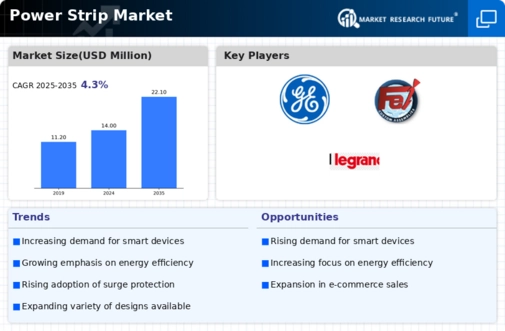Market Analysis
In-depth Analysis of Power Strip Market Industry Landscape
Residential real estate is designated for habitation and cannot be utilized for industrial or commercial purposes. This category encompasses housing options for individuals, groups, or families and stands as the most prevalent form of real estate investment, familiar to the majority of people. Residential real estate includes diverse options such as single-family homes, condominiums, apartments, townhouses, and various living arrangements situated in residential areas.
The growth of the construction industry, particularly in developing regions, is significantly propelled by the expanding urban population. Key factors influencing the sector's expansion in these regions include population surges, heightened residential development, and anticipated investments in infrastructure and industrial endeavors. Notably, the United Nations 2030 estimates project a remarkable growth of 165 million in India's urban population by 2030, positioning Delhi to become the second-densest city globally with an additional 10.4 million residents. This surge in urban population necessitates the expansion of cities through the construction of buildings on the city outskirts.
The escalating demand for residential buildings serves as a substantial catalyst for the construction sector. According to the IMF Global Housing Watch, residential real estate worldwide generated nearly USD 221.6 billion in 2019, showcasing an average year-on-year growth rate of 12%. This trend underscores the global significance of the residential real estate market and its vital role in the broader economic landscape.
The surge in residential construction also contributes to an increased demand for electrical devices. As the usage of electrical devices continues to grow, accompanied by a rising need for stable power supply for utility customers, these factors collectively drive the global power strip market during the forecast period. The evolving landscape of residential real estate and its intrinsic connection to the construction industry amplify the demand for power strips, given their role in catering to the expanding requirements of electrical connectivity within households.
The intertwining dynamics of urbanization, residential construction, and the demand for electrical solutions highlight the interconnectedness of various sectors within the broader economy. This not only underscores the significance of residential real estate in shaping urban landscapes but also emphasizes its role as a driver for ancillary industries like construction and electrical device manufacturing. As the global population continues to gravitate towards urban centers, the residential real estate sector is poised to remain a pivotal force, influencing and propelling associated markets in the foreseeable future.






Leave a Comment